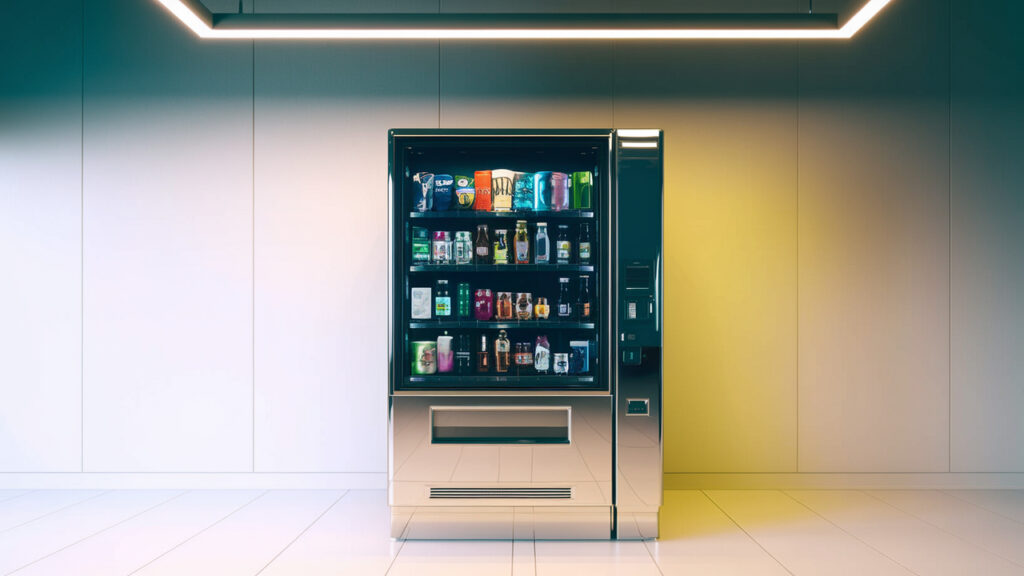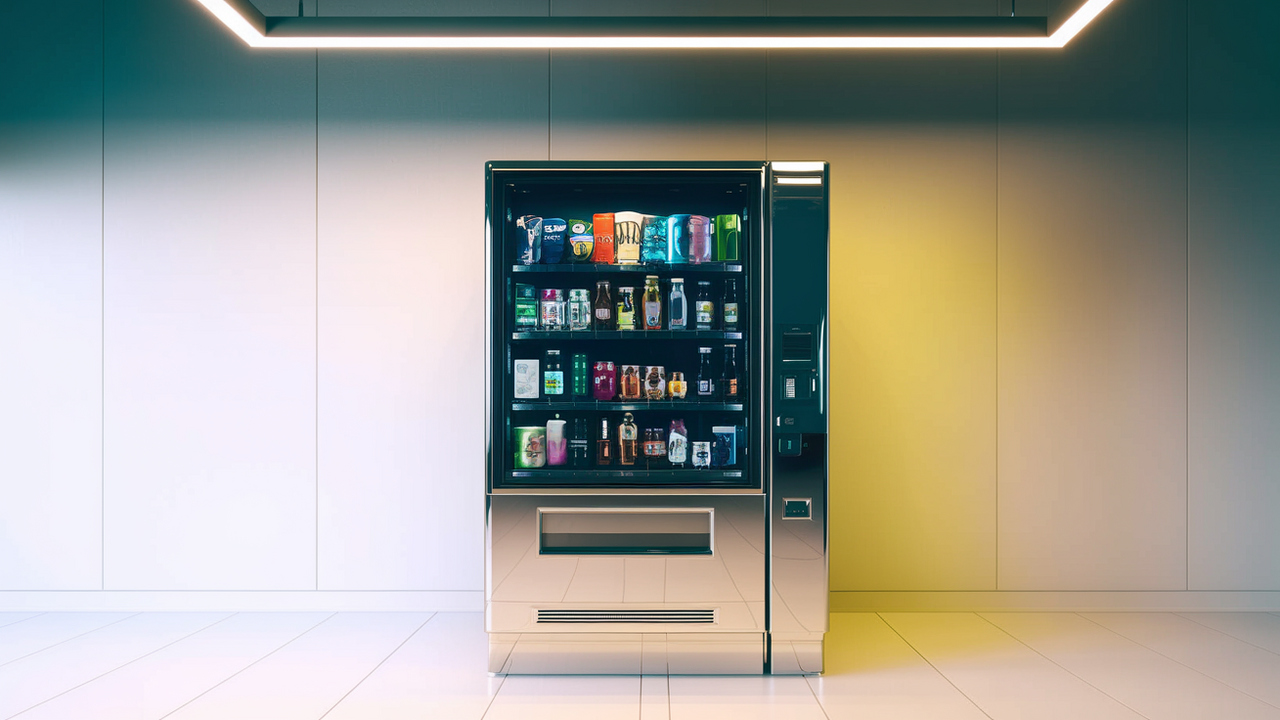How to Start a Vending Machine Business with Less Than $1000
When I first started researching vending machines, I thought it would take thousands of dollars just to break in. The truth? You can absolutely start a vending machine business for under $1,000—if you know what to look for, where to buy, and how to set up wisely.
In this post, I’ll break down exactly how to launch your own low-cost vending machine side hustle, how I did it on a budget, and how you can use smart tools like Amazon, local deals, and refurbished machines to get your first machine up and running.

Table of Contents
1. Start Small and Think Strategically
You don’t need to buy a big fancy combo machine on day one. For under $1,000, your best bet is to start with a small snack-only machine or a used/refurbished vending machine that accepts coins and bills.
Focus on low-cost machines that are reliable and easy to manage. You can always reinvest your profits into better machines later. Your first machine is all about learning the ropes.
2. Where to Buy Your First Vending Machine
Here are three options I recommend if you’re working with a $1,000 or less budget:
A. Amazon Compact Snack Machines
Amazon has some great entry-level vending machines for under $1,000 that are brand new and ship fast. Here’s one to check out:
VEVOR Compact Snack Vending Machine
B. Facebook Marketplace / Craigslist
I’ve bought machines for as little as $400 locally. You’ll need to inspect them in person, but you can find great deals. Look for sellers who are downsizing or liquidating.
C. Refurbished Vending Suppliers
Sites like CandyMachines.com and UsedVending.com offer refurbished machines with basic features at a big discount.
3. Don’t Worry About Card Readers Yet
Card readers are great—but they can add $300+ to your machine cost. For your first machine, start with a cash-only model in a location where people still use bills or coins (think laundromats, auto shops, or small offices).
Once your machine pays for itself, you can upgrade later with a Nayax or USA Tech card reader.
4. Find a Free Location (This is Key)
The best way to keep your startup costs under $1,000 is to secure a location that won’t charge rent. Here’s how I found my first spot:
- Ask local barbershops, salons, or repair shops
- Offer a small commission ($10–$20/month or a % of sales)
- Emphasize convenience: “You don’t have to lift a finger—I restock and maintain it myself.”
If the business already sells snacks, move on. But many don’t want the hassle and are happy to let you set up your machine in exchange for convenience.
5. Stock Smart with Low-Cost Products
You can stock your first machine for under $100 using bulk snacks from Amazon or Sam’s Club. Stick with bestsellers like:
- Chips (Doritos, Lays)
- Candy (M&M’s, Skittles)
- Cookies (Oreos, Grandma’s)
- Bottled water or canned drinks if your machine supports it
You’ll typically mark up items 80–120%, so if you spend $100 on inventory, your machine could earn $180–$220 when fully sold.
6. Keep Maintenance Simple
One of the things I love about vending is the low overhead. No employees, no rent, and minimal maintenance if you check the machine weekly.
Just plan to visit once or twice per week to:
- Restock items
- Collect cash
- Clean the front panel and payment slots
It takes less than 30 minutes per visit once you’re in the routine.
7. Track Your Profits and Reinvest
Here’s how my first month went with a $950 investment:
- Machine: $650 (used snack machine)
- Delivery: $100
- First stock: $100
- Misc (stickers, cleaner, coin organizer): $50
- Total investment: $900
Monthly earnings (gross): $300+
After restocking costs, I cleared about $180 in profit. I reinvested that profit and by month 4, I was buying my second machine.
Final Thoughts
You don’t need a huge bankroll or business loan to get started. If you’re willing to hustle, negotiate smart, and stock wisely, you can start a vending machine business for less than $1,000 and start generating passive income in your first month.
The key is to start lean, learn fast, and grow slowly. I did it, and so can you.
A lot of people think vending is “set it and forget it,” but the real secret is choosing your location wisely. I’ve placed machines in some spots that made less than $50 a month, and others that brought in over $300. It had nothing to do with the machine—it was all about foot traffic and customer behavior. A small, steady location is better than a flashy one that’s dead half the day.
If you’re nervous about approaching business owners for a location, start with places where you already spend money—your local barber, your auto repair guy, or your church. When you approach someone you already know, they’re more likely to give you a shot. Just bring pictures of the machine you plan to use and offer to restock weekly.
You don’t need a van or truck to run your first machine either. I started out using my regular car and a couple of plastic bins to hold my stock. As long as the machine isn’t full-sized and you’re smart about packaging, you can make it work. Don’t let lack of equipment stop you.
When it comes to restocking, keep it simple and consistent. I personally use a spreadsheet and write down what sells each time I visit. That way, I know exactly which products are moving and which ones to swap out. If you don’t track what’s selling, you’ll waste money on inventory that just sits there.
Also, make sure your machine looks clean every time someone walks by. A dirty or half-empty vending machine won’t earn trust—or cash. I always wipe mine down with glass cleaner and make sure bills and coins feed correctly. It takes 3 minutes but makes a big difference in sales.
Your goal in the first few months should be to cover your investment and reinvest any profit. Don’t blow your first $100 on something flashy. Buy a better machine, upgrade to a card reader later, or save up for your second location. This is a long game, and the more you treat it like a real business, the faster it grows.
You’ll also want to keep a small toolkit handy. A screwdriver, coin unjammer, and some zip ties have saved me more than once. Most of the fixes are minor—coin jams, stuck products, or small issues with a tray—but being prepared helps you look professional and avoid downtime.
Another tip: if you’re buying from Facebook Marketplace or Craigslist, always ask to test the machine before paying. Bring small bills and coins, check each slot, and look for cracks in the glass or damaged locks. I once drove 90 minutes for a machine that didn’t even turn on. Lesson learned.
Don’t forget to set your prices right. You want to cover product cost, account for taxes or fees, and still make a profit. If you buy a candy bar for $0.55, don’t sell it for $0.75—sell it for $1.25. You’re providing convenience, and people are willing to pay for it.
If your machine takes only cash, keep change simple. Avoid prices like $1.10 or $1.85 where coin combinations are awkward. Stick to whole dollar or fifty-cent increments to keep transactions smooth and reduce customer frustration.
Once your machine starts generating steady income, it becomes truly passive. You’ll know when to refill, what to stock, and how often to check. I spend less than two hours a week managing my machines now—and I make back that time tenfold in passive profit every month.
Most importantly, don’t overthink it. Start with one machine, one location, and a $1,000 budget. Test the process, learn what works, and scale from there. The vending business isn’t complicated—but it does reward people who take action, stay consistent, and treat it like a real business.


11 thoughts on “How to Start a Vending Machine Business with Less Than $1000”